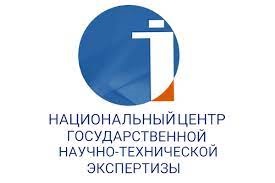The Language of Modern Kazakh Cinema: Sociolinguistic Issues
https://doi.org/10.55491/2411-6076-2025-2-168-182
Abstract
This article examines the sociolinguistic features of the language used in contemporary Kazakh cinema and provides a scholarly rationale for the role of the Kazakh language within the film industry. The aim of the study is to identify the mixed linguistic structures characteristic of Kazakh cinema (such as code-switching, slang, jargon, pidginization, and creolization) and to determine their impact on national language policy and the public prestige of the Kazakh language. Deviations from linguistic norms recorded in cinematic works directly affect language purity, emotional connection with the audience, and the linguistic identification of youth. More than twenty comedic and dramatic films were analyzed as part of the language corpus, and a content analysis was conducted to determine the frequency of code-switching, grammatical inconsistencies, lexical hybrids, and the presence of obscene language. The relevance of this study lies in the fact that Kazakh cinema constitutes a significant component of national culture, and its language practices have a direct impact on how the language is perceived by audiences and on the development of the Kazakh language itself. In the context of globalization and increasing foreign cultural influence, the preservation and advancement of the national language face new challenges. Therefore, the language of Kazakh cinema is considered not only a creative medium but also a crucial tool for language policy and the preservation of cultural heritage. The findings of the study may be useful for screenwriters, directors, and linguists working in the field of cinema. The analysis of linguistic practices in Kazakh filmmaking can inform strategies to enhance the status of the Kazakh language, as well as its preservation and development. Additionally, the research may serve as educational material for students and scholars interested in Kazakh cinema and is aimed at expanding opportunities for linguistic revitalization through cinema, while also advancing the use of language as a means of ideological and cultural representation.
About the Authors
A. PiyazbayevaKazakhstan
Akmaral Piyazbayeva, Doctoral Student
Almaty
A. Abasilov
Kazakhstan
Aman Abasilov, Candidate of Philological Sciences, Associate Professor
Kyzylorda
References
1. Abasilov, A. (2016) Aleumettіk lingvistika. Oqu quraly/ A.Abasilov. Almaty: Palitra Press, 2016. 250 b. [Abasilov, A. (2016) Sociolinguistics. Textbook / A. Abasilov. Almaty: Palitra Press, 2016. 250 p.] (in Kazakh)
2. Abikeeva, G.O. (2022) Kino kak vedushhaja kreativnaja industrija Kazahstana. Central Asian Journal of Art Studies. 2022. №1. S. 54-66. [Abikeyeva, G.O. (2022) Cinema as the Leading Creative Industry of Kazakhstan. Central Asian Journal of Art Studies. 2022. №1. P. 54-66.] (in Russian)
3. Aleumettіk lingvistika terminderіnіng sozdіgі (2020) Slovar' sociolingvisticheskih terminov. 2-basylymy, ongdelgen / Je.D. Sulejmenova, N.Zh. Shajmerdenova, Zh.S. Smagulova, D.H. Aqanova. Almaty, 2020. 400 b. [Dictionary of Sociolinguistic Terms (2020) 2nd edition, revised / E.D. Suleimenova, N.Zh. Shaimerdenova, Zh.S. Smagulova, D.Kh. Akanova. Almaty, 2020. 400 p.] (in Kazakh)
4. Bakker, P. (1997) A Language of Our Own: The Genesis of Michif, the Mixed Cree-French Language of the Canadian Métis. Oxford University Press. (in English)
5. Bell, A. (2001) Back in style: Reworking audience design. In P. Eckert & J. R. Rickford (Eds.), Style and sociolinguistic variation. P. 139-169. Cambridge University Press. (in English)
6. Bickerton, D. (1981) Roots of Language. Karoma Publishers. (in English)
7. Bourdieu, P. (1991) Language and symbolic power (J. B. Thompson, Ed.; G. Raymond & M. Adamson, Trans.). Cambridge: Polity Press. (in English)
8. Cameron, D. (2000) Performing gender identity: Young men’s talk and the construction of heterosexual masculinity. In S. Sarangi & M. Coulthard (Eds.), Discourse and social life. P. 80-94. London: Longman. (in English)
9. DeGraff, M. (2005) Linguists’ most dangerous myth: The fallacy of Creole Exceptionalism. Language in Society, 34(4). P. 533-591. (in English)
10. Erzhanov, A. (2021) Otricatel'nye otzyvy nastraivajut na bor'bu. The Village Kazakhstan. [Jelektrondy resurs] Data obrashhenija: 22 maja 2021. [Yerzhanov, A. (2021) Negative reviews set you up for a fight. The Village Kazakhstan. [Electronic resource] Accessed on: May 22, 2021.] https://www.the-village-kz.com/village/city/city-interview/9345-rezhisseradilhan-erzhanov-otritsatelnye-otzyvy-nastraivayut-na-borbu (in Russian)
11. Fairclough, N. (1995) Media discourse. London: Edward Arnold. (in English)
12. Fishman, J.A. (1972) The sociology of language: An interdisciplinary social science approach to language in society. Rowley, MA: Newbury House. (in English)
13. Higson, A. (2000) The limiting imagination of national cinema. In M. Hjort & S. Mackenzie (Eds.), Cinema and nation. P. 57-68. London: Routledge. (in English)
14. Hodson, J. (2014) Dialect in film and literature. London: Palgrave Macmillan. (in English)
15. Holm, J. (2000) An introduction to pidgins and creoles. Cambridge: Cambridge University Press. (in English)
16. Mufwene, S.S. (2001) The Ecology of Language Evolution. Cambridge University Press. (in English)
17. Teoreticheskie problemy social'noj lingvistiki (1981). Moskva: Nauka. S. 301-302. [Theoretical Problems of Social Linguistics (1981). Moscow: Nauka. P. 301-312.] (in Russian)
18. Wierzbicka, A. (1997) Understanding cultures through their key words: English, Russian, Polish, German, and Japanese. Oxford: Oxford University Press. (in English)
Review
For citations:
Piyazbayeva A., Abasilov A. The Language of Modern Kazakh Cinema: Sociolinguistic Issues. Tiltanym. 2025;(2):168-182. (In Kazakh) https://doi.org/10.55491/2411-6076-2025-2-168-182

















